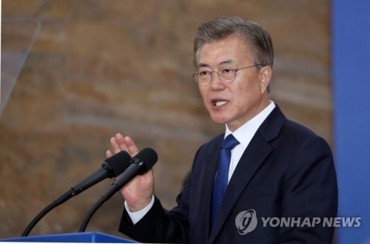
The number of foreigners employed in Korea has reached an unprecedented level, with the majority earning between 2 million and 3 million won per month. (Image courtesy of Korea Bizwire)
SEOUL, Dec. 19 (Korea Bizwire) – The number of foreigners employed in Korea has reached an unprecedented level, with the majority earning between 2 million and 3 million won per month. Thanks to the minimum wage law, salaries have consistently risen each year, and one in three foreign workers now earns more than 3 million won.
Surprisingly, over 90 percent of these workers express satisfaction with their wages, making them keen on continuing their stay in Korea.
Chinese nationals continue to dominate as the largest group of foreign workers in Korea. However, there has been a notable surge in the number of workers from Southeast Asia, particularly Vietnam. Non-professional workers holding E-9 visas outnumber overseas Koreans with F-4 visas.
According to the ’2023 Immigrant Status and Employment Survey Results’ released by Statistics Korea on December 18, Korean Chinese make up the largest segment of foreigners in Korea at 33 percent, with 472,000 residents as of May this year. They are followed by Vietnamese (14.1 percent – 201,000) and Chinese (9.4 percent – 135,000).
However, the number of Korean-Chinese residents has decreased, while Chinese residents increased by only 5,000, reflecting recent dynamics in the Korea-China relationship. On the other hand, the number of Southeast Asian residents, including Vietnamese, increased by more than 40,000.
Employment figures mirror the residency statistics, with Korean-Chinese comprising the highest proportion of employed foreigners this year at 35.3 percent. However, the number of employed Korean-Chinese decreased by 5,000 in a year, and employed Chinese also fell by 2,000 to 46,000. In contrast, the number of Vietnamese workers experienced a surge of 16,000, reaching 104,000. The number of foreigners working in Korea from the rest of Asia increased by 73,000.
The majority of these workers are wage earners, constituting 94.5 percent of the total foreign workforce. Among them, the number of commercial workers increased while temporary and day laborers decreased.
The average monthly salary for foreign wage earners was less than 3 million won, with 50.6 percent earning between 2 million and less than 3 million won. However, a growing number (35.8 percent) now earn more than 3 million won. Only 3.7 percent earn less than 1 million won, and 9.9 percent earn between 1 million and 2 million won.
Foreign workers in Korea generally enjoyed higher wages than the previous year, attributed to the rising minimum wage. Only 10 percent expressed dissatisfaction with their wages, a decrease of 0.8 percentage points from the previous year, while 55.2 percent expressed satisfaction, an increase of 3.7 percentage points.
Regarding overall job satisfaction, encompassing working hours, wages, and benefits, 62.6 percent report satisfaction, while only 3.7 percent report dissatisfaction.
These positive work conditions contribute to the desire of most foreigners to stay in Korea. A significant 89.6 percent of them plan to extend their stay or explore avenues like obtaining permanent resident status (16.4 percent) and Korean citizenship (10.3 percent). This represents a one-percentage-point increase from the previous year, underlining the growing appeal of working and residing in Korea for foreign nationals.
M. H. Lee (mhlee@koreabizwire.com)






